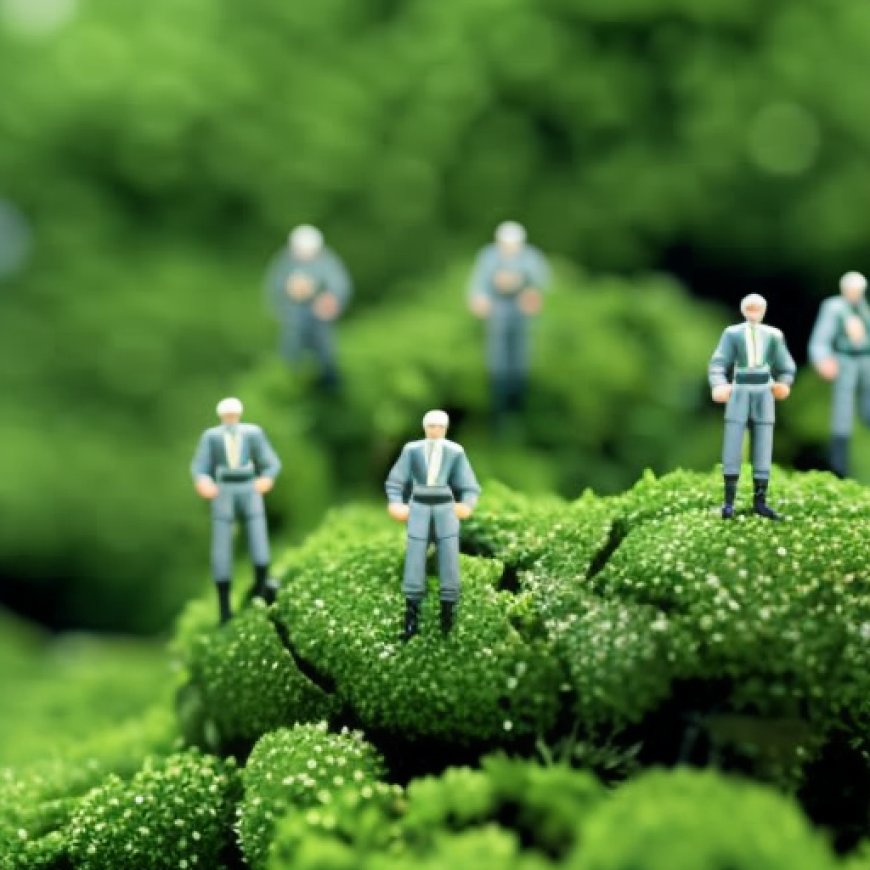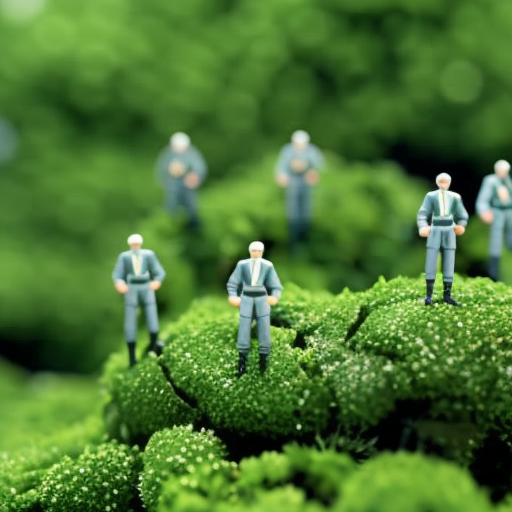Scaling green chemistry is a requirement to reverse biodiversity losses – Thomson Reuters Institute
Scaling green chemistry is a requirement to reverse biodiversity losses Thomson Reuters


As the loss of biodiversity becomes an ever-increasing financial risk for many organizations, green chemistry may offer one way to mitigate the damage of future ecological disasters
As the loss of biodiversity becomes an ever-increasing financial risk for many organizations, green chemistry may offer one way to mitigate the damage of future ecological disasters
The Task Force on Nature-related Financial Disclosure (TNFD)
The Task Force on Nature-related Financial Disclosure (TNFD), which is a market-led initiative designed to helps financial institutions and companies better understand the short- and long-term impacts of nature loss on their financial performance, is expected to release its risk management and disclosure framework next month.
Biodiversity loss as a mainstream issue
Losses in biodiversity, which is the variety of life in the world or in a particular habitat or ecosystem, is fast emerging as a mainstream issue. Indeed, biodiversity loss as a source of financial risk has already been acknowledged by central banks through the publication of biodiversity impact and assessment studies. These studies found that between 35% and 54% of assets held by financial institutions are highly or very highly dependent on ecosystem services, according to the Sustainable Policy Institute.
The impact of the chemical industry on biodiversity
Unfortunately, the chemical industry is a driver of accelerated losses within nature. The impact of nature-related losses, however, is often ignored or viewed only through a narrow lens with an inconsistency relative to that of climate change. In reality, however, climate change, losses in biodiversity, and chemicals are mutually reinforcing negative multipliers when it comes to accelerated permanent damage to biodiversity.
For example, institutions and people tend to be concerned about environmental effects, which can include biodiversity loss, but often other threats to the health and well-being of humans are perceived to be less urgent. What is mind-boggling is that when it comes to anthropogenic chemicals — synthetic organic chemicals; pesticides; plastics, such as organic polymers and additives; and many metals and metalloids — people often begin to worry about their own health without consideration for the impacts on other species. Selectively focusing on one negative reality more so than others reinforces complacency and a lack of urgent action to reverse the problem.
The environmental science and technology community has “long emphasized the logical link between chemical pollutants and biodiversity, the adverse effects caused by toxic anthropogenic chemicals on the organisms in the environment, and the additional exacerbation of these negative impacts by climate change.”
Adoption of green chemistry needed at scale
Green chemistry aims to design and produce cost-competitive chemical products and processes that attain the highest level of pollution-prevention by reducing that pollution at its source, which then are less hazardous to human health and the environment, according to the Environmental Protection Agency. In addition, it is an approach “that efficiently uses renewable raw materials, eliminating waste and avoiding the use of toxic and hazardous reagents and solvents in the manufacture and application of chemical products,” according to a Green Chemistry class description from Penn State University.
Companies and higher education institutions are joining forces to scale up green chemistry. One example of collaboration among colleges and universities is the Green Chemistry Commitment, which is a consortium program that unites the green chemistry community around shared goals and a common vision to expand the reach of green chemists and drive systemic and lasting change in chemistry education.
Another example is the Industry Focus Process Chemicals (IFPC) Policy of the Responsible Business Alliance (RBA), which is “world’s largest business coalition to corporate social responsibility in global supply chains.”
As RBA members, companies within the chemical industry and in other sectors that use harmful elements, are beginning to take action through the adoption of green chemistry programs. The RBA has outlined a policy and program to source process chemicals — agents that are used to enhance industrial processes using solvents, lubricants, coatings, and adhesives, among others — more responsibly in order to minimize harm to nature.
For example, Intel’s responsible chemical management program entails a screening mechanism to identify suppliers that use chemicals or supply chemicals, gas, or other regulated materials. The process identifies suppliers of chemicals and gasses for the company’s production processes and requires those suppliers to complete alternative assessments for high-risk ingredients based on the company’s green chemistry criteria. Doing so is required before the supplier is admitted to being an approved supplier in Intel’s high-volume manufacturing process. Further, these suppliers must provide alternative assessments for the high-risk chemicals in its own operations that the suppliers use to produce products for Intel to ensure a clean electronics production network.
SDGs, Targets, and Indicators
-
SDG 14: Life Below Water
- Target 14.2: By 2020, sustainably manage and protect marine and coastal ecosystems to avoid significant adverse impacts, including by strengthening their resilience, and take action for their restoration in order to achieve healthy and productive oceans.
- Indicator: The article mentions the impact of nature-related losses on marine ecosystems and the need to minimize harm to nature through responsible chemical management.
-
SDG 15: Life on Land
- Target 15.1: By 2020, ensure the conservation, restoration, and sustainable use of terrestrial and inland freshwater ecosystems and their services, in particular forests, wetlands, mountains, and drylands, in line with obligations under international agreements.
- Indicator: The article discusses the loss of biodiversity and its financial risks, highlighting the need for green chemistry to mitigate damage to ecosystems.
-
SDG 12: Responsible Consumption and Production
- Target 12.4: By 2020, achieve the environmentally sound management of chemicals and all wastes throughout their life cycle, in accordance with agreed international frameworks, and significantly reduce their release to air, water, and soil in order to minimize their adverse impacts on human health and the environment.
- Indicator: The article emphasizes the adoption of green chemistry as a way to design and produce chemical products that are less hazardous to human health and the environment.
| SDGs | Targets | Indicators |
|---|---|---|
| SDG 14: Life Below Water | Target 14.2: By 2020, sustainably manage and protect marine and coastal ecosystems to avoid significant adverse impacts, including by strengthening their resilience, and take action for their restoration in order to achieve healthy and productive oceans. | The article mentions the impact of nature-related losses on marine ecosystems and the need to minimize harm to nature through responsible chemical management. |
| SDG 15: Life on Land | Target 15.1: By 2020, ensure the conservation, restoration, and sustainable use of terrestrial and inland freshwater ecosystems and their services, in particular forests, wetlands, mountains, and drylands, in line with obligations under international agreements. | The article discusses the loss of biodiversity and its financial risks, highlighting the need for green chemistry to mitigate damage to ecosystems. |
| SDG 12: Responsible Consumption and Production | Target 12.4: By 2020, achieve the environmentally sound management of chemicals and all wastes throughout their life cycle, in accordance with agreed international frameworks, and significantly reduce their release to air, water, and soil in order to minimize their adverse impacts on human health and the environment. | The article emphasizes the adoption of green chemistry as a way to design and produce chemical products that are less hazardous to human health and the environment. |
Behold! This splendid article springs forth from the wellspring of knowledge, shaped by a wondrous proprietary AI technology that delved into a vast ocean of data, illuminating the path towards the Sustainable Development Goals. Remember that all rights are reserved by SDG Investors LLC, empowering us to champion progress together.
Source: thomsonreuters.com

Join us, as fellow seekers of change, on a transformative journey at https://sdgtalks.ai/welcome, where you can become a member and actively contribute to shaping a brighter future.







